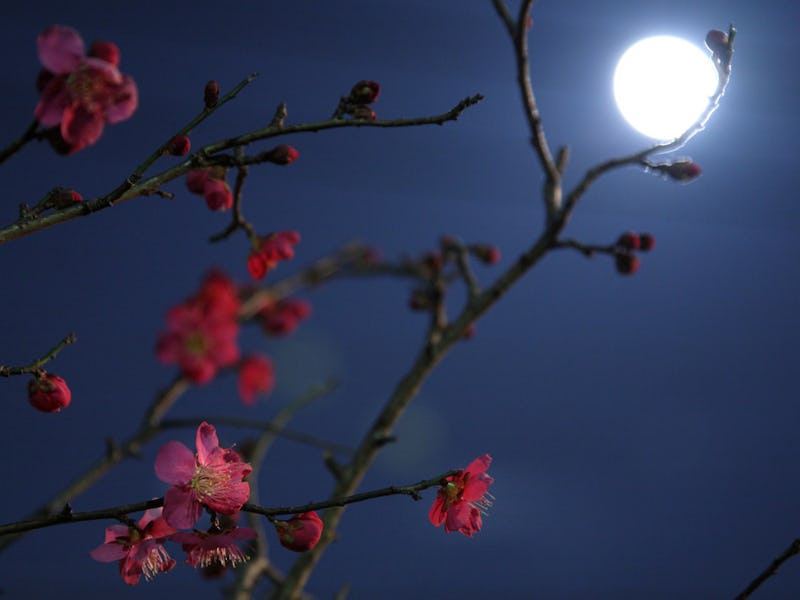What Is a Flower Moon? How This Celestial Event Is Different From Others
It's about more than just flowers.

Spring 2018 has been a season full of celestial happenings, from the Lyrid Meteor Shower and Jupiter Triangle in April to the Eta Aquariid Meteor Shower earlier in May. This month is ending on a bright note thanks to the upcoming full moon, aka the Flower Moon, which is known for more than just blooming flowers.
The Flower Moon will reach its fullest phase on May 29 at 10:20 a.m. Eastern, and although the moon will be at its fullest during the day, it will still offer stellar views in the evening when the moon rises at 8:22 p.m. Eastern. And if stargazers feel extra romantic that night, they will be taking part in a long tradition associated with May’s full moon.
The Flower Moon used to inspire more than just flowers.
Join our private Dope Space Pics group on Facebook for more strange wonder.
The Flower Moon gets its name partially from the myriad of wildflowers that first bloom in the late spring month. Bluebells, indigo, lupine, sundrops, and violets are just some of the most popular flowers that make their appearance this month. But according to the Old Farmers’ Almanac the Flower Moon also marks a time for increased fertility, as it was usually a time when temperatures became warm enough for safely bearing young. Because of these blooming opportunities, the Flower Moon has also been called Mother’s Moon and Milk Moon.
Since the Flower Moon arrives in the late spring, people in the Northern Hemisphere will see the alleged fertility-increasing moon rise more from the southeast than from the east. That’s because the moon’s path as seen from Earth follows the ecliptic plane of the planet’s orbit, which positions the full moon south of its typical due east whenever it’s below the celestial equator.
The moon that historically has signified baby-making won’t be the only celestial highlight on Tuesday. Saturn will rise in the constellation Sagittarius at 10:21 p.m. Eastern and Venus will still be visible up to 26 degrees above the horizon before it sets at 10:53 p.m. Eastern. In areas with less light pollution, Jupiter will also appear just west of the Flower Moon for most of the night.
While most people no longer associate the Flower Moon with a traditional mating season, its appearance at the end of spring could inspire a summer romance or two. And if not, at least there will be lots of flowers blooming.